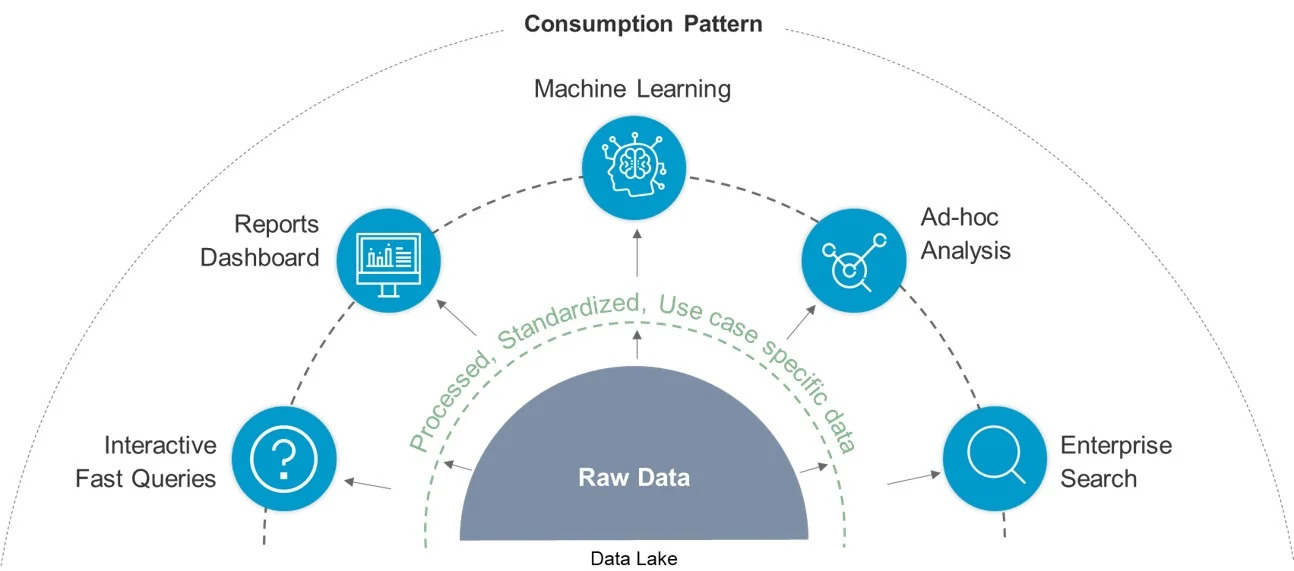COVID-19 has had an unprecedented adverse impact on global health and economy at large. While the global economy is navigating the financial and operational challenges, the life sciences industry is at the epicenter of attention as the world awaits an effective vaccination to defeat the pandemic. The response so far has been remarkable as governments, organizations, regulators, researchers, and academia have all come together like never before; to create and share knowledge, supply resources, and provide access to technical skills and technologies. It is noteworthy that drug giant Pfizer and BioNtech got their joint SARS-CoV-2 vaccine approved in less than 8 months, which is a clear example for how such collaborations are bearing fruit. In this article we shall reflect upon the opportunities, strategies and technologies that will continue to impact the life science industry in 2021 and beyond.
1. AI powered drug R&D combined with MLOps
AI powered drug discovery is enabling big pharma & biotechs to change the traditional approach of R&D often taking between 11 – 15 years and with costs now exceeding $3 billion. From drug target identification, lead compound screening, preclinical and clinical trials, to greatly improving the success rate of drug development; AI can really streamline R&D efforts by integrating and processing vast datasets to derive actionable insights.
As running these multiple ML models at scale becomes increasingly difficult, MLOps offers an automated way of developing, deploying and refining over time. It refers to the application of DevOps tools applied over ML models from production to deployment.
Here are some use-cases where AI/ML tools are used in drug discovery and development:

2. Hyper-automation across the value chain from molecule to market
Gartner predicted that by 2024, Organizations will cut their operational costs by 30% by adopting hyper automation techniques along with redesigning their business processes. The life science industry has been relatively slow to catch up to this wave but is quickly picking up as some of the major players have already integrated hyper automation into their business strategy.
Potential areas span across discovery and research, development, manufacturing, sales and marketing, supply chain and distribution. Given the highly regulated nature of the industry, sector automation could potentially revolutionize compliance management, patient service and other supply chain improvements. For example; automation in drug R&D can aid identification of biomarkers and DNA/RNA genomic sequencing. On the manufacturing side it can help with continuous plant monitoring and help fast track decision system, optimize inventory and lead to better management of market demands.

3. Use of advanced analytics
Pharma companies are transforming their traditional approach of developing medicines to deliver highly personalized drugs to offer the right treatment at the right time. This is being done by analyzing millions of deep, broad and disconnected data sets around a patient coming from EHR, digital data, imaging and multi-omics technologies.
Combined the power of AI and real world data, hypotheses can be generated at scale to improve lab testing efficiencies, helping organizations understand disease, drug effectiveness, speed up search for new indications for existing drugs and optimize pricing decisions based on value that is being delivered.

4. Creating value from next-generation real world evidence
Recent advances in Real World Evidence (RWE) analytics have made pharma organizations looks beyond just descriptive analysis that helps with basic patient profiling and cohort comparisons. Advanced predictive models in combination with ML, probabilistic models, unsupervised algorithms help understand patient characteristics, disease progression, patient response and any potential risks. This facilitates doctors to intervene at the right time and deliver the right care.

5. Quantum computing as pharma’s next big disruptor
The life sciences sector has the potential to benefit significantly from quantum computing. Majority of challenges in the life science industry are computationally complex, be it finding relationships among sequences, structures and functions; or determining the interaction of different molecules from drug to the body. Compared to 1% today, by 2023, 20% of organizations will be budgeting for quantum computing projects. This holds a very good potential for transforming data heavy processes, speeding up the drug discovery R&D or simulating clinical trials. Some use-cases are:
6. Adopting FAIRIFICATION: Breaking down data silos, developing machine-ready data
Adopting FAIR data principles goes a long way and Covid-19 has made the industry realize that a big potential exists in collaborations to produce effective drugs for better patient outcomes. FAIRIFICATION helps organizations combine external datasets with proprietary information to gain novel insights using graph technologies.
Adopting better methods for data capture and structuring, complex models for data storage and utilizing advanced platforms to auto-identify data relationships, are signs that organizations are prepared for tomorrow, where the data is ready for machine consumption.

Conclusion
As global economies continue to recover and are looking at innovations to bridge technological gaps, Covid-19 has only accelerated the process and has made us more adaptable and responsive. Organizations are looking at realigning their traditional corporate strategies and are adopting a platform-first strategy that is dynamic to handle a wide range of uncertainties.


